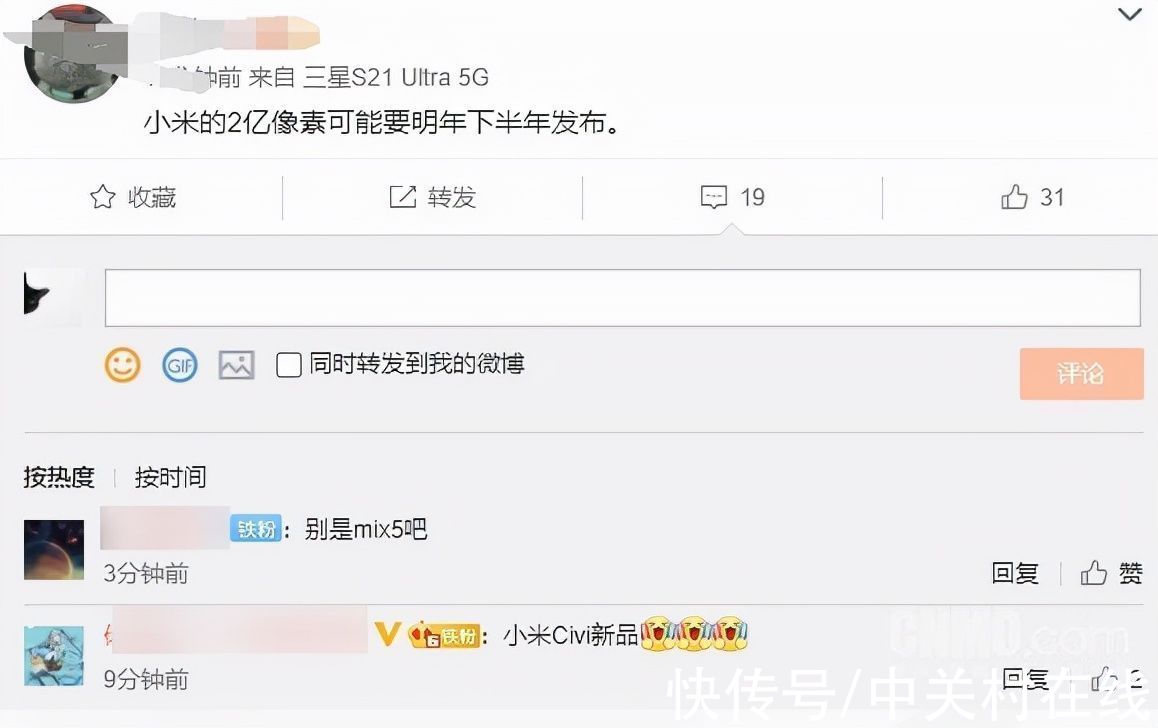Android|Android之从Camera捕获图像讲解
我们知道所有带有摄像头的设备都会附带Camera应用程序,Camera 应用程序包含一个意图过滤器,用于与Camera
应用程序图像的获取。
为了通过一个意图利用Camera应用程序,我们需要构造一个意图过滤器,可以这样定义:
Intent intent=new Intent("android.media.action.IMAGE_CAPTURE");
但在实际开发中,并不推荐这样做,这时我们可以指定MediaStore类中的常量ACTION_IMAGE_CAPTURE,使用这样
的好处是为了有利于未来的变化。因此,我们这样定义:
Intent intent=new Intent(android.provider.MediaStore.ACTION_IMAGE_CAPTURE);
为了从Camera应用程序中获取图像,这时,应该将startActivity更改为startActivityForResult方法:
startActivityForResult(intent, 0);
这时我们从onActivityResult方法中获取返回的数据:
@Override
protected void onActivityResult(int requestCode, int resultCode, Intent data) {
super.onActivityResult(requestCode, resultCode, data);
if(resultCode==RESULT_OK){
Bundle extras=data.getExtras();
Bitmap bitmap=(Bitmap)extras.get("data");
}
}Camera应用程序通过一个意图传递的附加值(extra)中返回图像,该意图将在onActivityRsult方法中传递给主调活
动。附加值的名称为“data”,它包含一个Bitmap对象,需要从泛型对象将它强制转换过来。
以上所得到的只是一个很小的图像,好吧,这其实得到的就是一个缩略图。
以上只是得到一个很小的缩略图,那如何获取大图的,在Android1.5开始,在大多数设备上可以将一个附加值传递给
触发Camera应用程序的意图,这个附加值的名称在MediaStore类中指定,它是一个常量,称为EXTRA_OUTPUT。
这个附加值用于指示Camera应用程序将捕获到的图像存放在什么位置。例如以下代码:
String mFilePath=Environment.getExternalStorageDirectory().getAbsolutePath()+"/bill.jap"; File file=new File(mFilePath); mImageUri=Uri.fromFile(file); Intent intent=new Intent(android.provider.MediaStore.ACTION_IMAGE_CAPTURE); intent.putExtra(android.provider.MediaStore.EXTRA_OUTPUT, mImageUri); startActivityForResult(intent, 0);
加载并显示一幅图像对内存使用情况很有影响,幸好Android提供了一个名为BitmapFactory的实用程序类,该程序类
提供了一系列的静态方法,允许通过各种来源加载Bitmap图像。BitmapFactory中的可用方法将会调用
BitmapFactory.Options类,这使得我们能够定义如何将Bitmap读入内存中。当加载图像时,可以设置BitmapFactory
使用的采样大小,在BitmapFactory.Options中指定inSampleSize参数。比如:
BitmapFactory.Options option=new BitmapFactory.Options();
option.inSampleSize=5;
Bitmap bitmap=BitmapFactory.decodeFile(mFilePath, option);
以上是将会产生一副大小是原始图像大小1/5的图像。
这是一种加速加载大图像的方法,但是没有真正考虑图像的原始大小,也没有考虑屏幕的大小,以下是获取屏幕的尺
寸:
DisplayMetrics metrics=new DisplayMetrics();
this.getWindowManager().getDefaultDisplay().getMetrics(metrics);
mWindowHeight=metrics.heightPixels;
mWindowWidth=metrics.widthPixels;
为了确定图像的所有尺寸,我们使用了BitmapFactory和BitmapFactory.Options,并将
BitmapFactory.Options.inJustDecodeBounds变量设置为true。这将通知BitmapFactory类只返回该图像的范围,无须
尝试解码图像本身。当使用这个方法时,BitmapFactory.Options.outHeight和BitmapFactory.Options.outWidth变量将
会被赋值,例如:
BitmapFactory.Options mBitmapFactory=new BitmapFactory.Options();
mBitmapFactory.inJustDecodeBounds=true;
Bitmap bitmap=BitmapFactory.decodeFile(mFilePath, mBitmapFactory);
int heightRatio=(int)Math.ceil(mBitmapFactory.outHeight/(float)mWindowHeight);
int widthRatio=(int)Math.ceil(mBitmapFactory.outWidth/(float)mWindowWidth);
之后可以通过高度比率或宽度比率来显示图像大小。
以下是一个完整的示例代码:
MainActivity:
public class MainActivity extends Activity {
private ImageView iv_show;
private Button btn_open;
private Uri mImageUri;
private String mFilePath;
private int mWindowWidth;
private int mWindowHeight;
@Override
protected void onCreate(Bundle savedInstanceState) {
super.onCreate(savedInstanceState);
setContentView(R.layout.activity_main);
initView();
initEvent();
initdata();
}
private void initdata(){mFilePath=Environment.getExternalStorageDirectory().getAbsolutePath()+"/bill.jap";
File file=new File(mFilePath);
mImageUri=Uri.fromFile(file);
DisplayMetrics metrics=new DisplayMetrics();
this.getWindowManager().getDefaultDisplay().getMetrics(metrics);
mWindowHeight=metrics.heightPixels;
mWindowWidth=metrics.widthPixels;
}
private void initEvent(){btn_open.setOnClickListener(new OnClickListener() {@Override
public void onClick(View v) {
Intent intent=new Intent(android.provider.MediaStore.ACTION_IMAGE_CAPTURE);
intent.putExtra(android.provider.MediaStore.EXTRA_OUTPUT, mImageUri);
startActivityForResult(intent, 0);
}
});
}
private void initView(){
iv_show=(ImageView)findViewById(R.id.iv_show);
btn_open=(Button)findViewById(R.id.btn_open);
} @Override
protected void onActivityResult(int requestCode, int resultCode, Intent data) {
super.onActivityResult(requestCode, resultCode, data);
if(resultCode==RESULT_OK){
/*
* 加载图像尺寸
*/
BitmapFactory.Options mBitmapFactory=new BitmapFactory.Options();
mBitmapFactory.inJustDecodeBounds=true;
Bitmap bitmap=BitmapFactory.decodeFile(mFilePath, mBitmapFactory);
int heightRatio=(int)Math.ceil(mBitmapFactory.outHeight/(float)mWindowHeight);
int widthRatio=(int)Math.ceil(mBitmapFactory.outWidth/(float)mWindowWidth);
/*
* 判断图像是否超出屏幕
*/
if(heightRatio>1&&widthRatio>1){
if(heightRatio>1){
mBitmapFactory.inSampleSize=heightRatio;
}else{
mBitmapFactory.inSampleSize=widthRatio;
}}/*
* 进行解码
*/
mBitmapFactory.inJustDecodeBounds=false;
bitmap=BitmapFactory.decodeFile(mFilePath, mBitmapFactory);
iv_show.setImageBitmap(bitmap);
}
}
}布局文件(activity_main):
【Android|Android之从Camera捕获图像讲解】最后别忘了给AndroidManifest添加相应的权限:
转载请注明出处:http://blog.csdn.net/hai_qing_xu_kong/article/details/45696873情绪控_
推荐阅读
- android第三方框架(五)ButterKnife
- Android中的AES加密-下
- 带有Hilt的Android上的依赖注入
- android|android studio中ndk的使用
- Android事件传递源码分析
- RxJava|RxJava 在Android项目中的使用(一)
- Android7.0|Android7.0 第三方应用无法访问私有库
- 深入理解|深入理解 Android 9.0 Crash 机制(二)
- android防止连续点击的简单实现(kotlin)
- Android|Android install 多个设备时指定设备



![何以解忧下一句是什么[微笑]](http://img.readke.com/230928/235510EM-0-lp.jpg)







